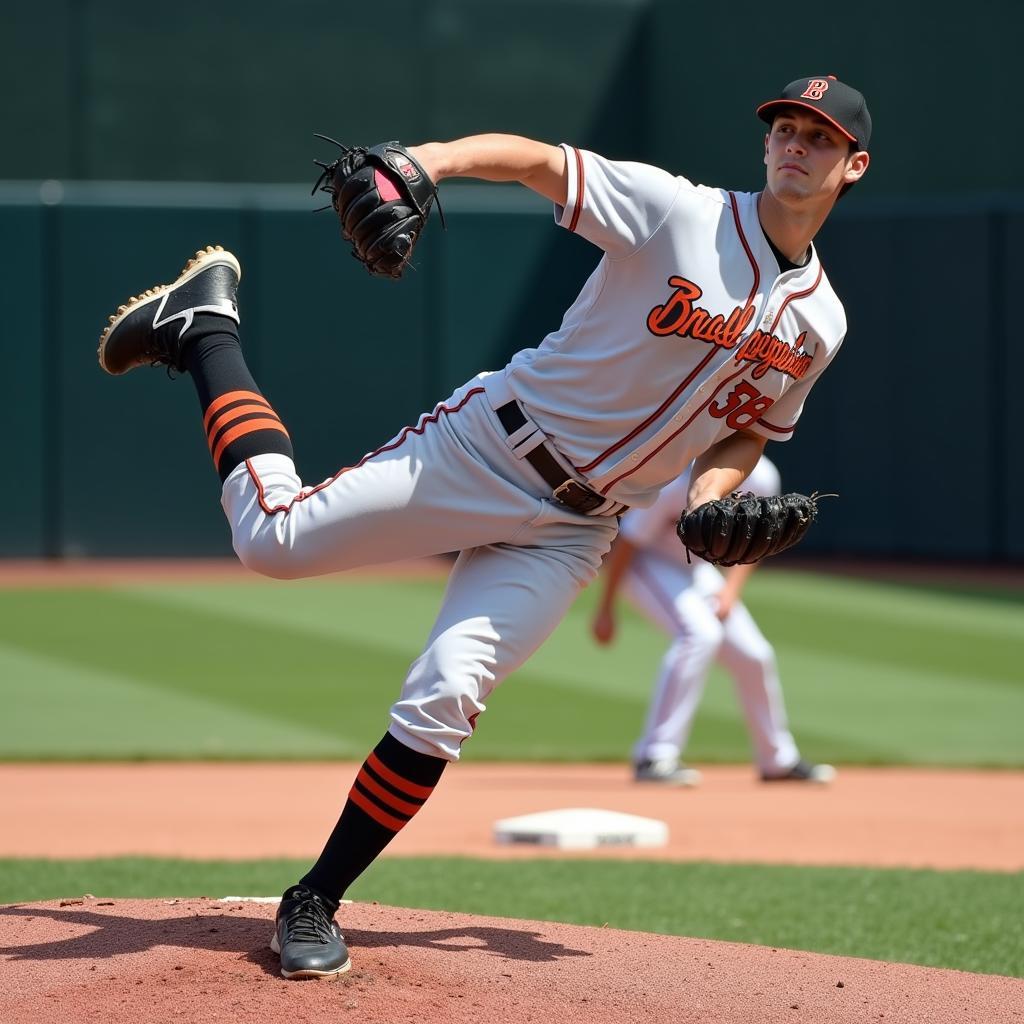Understanding Motor Preferences in Baseball
October 28, 2024The world of baseball is filled with unique traditions and intricacies, and one area that often sparks curiosity is the concept of “motor preferences.” While it might seem strange to think about a sport like baseball having preferred movement patterns, the reality is that these preferences can significantly impact a player’s performance on the field.
 Baseball Player Batting
Baseball Player Batting
Unveiling the Mystery of Motor Preferences
In simple terms, motor preferences in baseball refer to a player’s natural inclination towards certain movement patterns and techniques. These preferences can manifest in various aspects of the game, from batting and pitching to fielding and throwing. While coaching and training play a vital role in shaping a player’s skills, understanding their inherent motor preferences can be crucial for optimizing their development and maximizing their potential.
For example, a batter might naturally favor a closed stance at the plate, while another might feel more comfortable with an open stance. Similarly, a pitcher might have a natural tendency to throw a curveball with more spin or a fastball with a specific grip. These preferences are often subtle and unconscious, but recognizing and working with them can make a world of difference in a player’s overall performance.
 Baseball Pitcher in Action
Baseball Pitcher in Action
Why Motor Preferences Matter in Baseball
You might be wondering, “Why are motor preferences so important in baseball?” Well, here’s the thing: Baseball, at its core, is a game of precision and repetition. Players spend countless hours honing their skills and perfecting their techniques. By understanding and working with their natural motor preferences, players can achieve a higher level of efficiency and consistency in their movements. This can translate into improved batting averages, more strikeouts for pitchers, and fewer errors in the field.
Ignoring motor preferences, on the other hand, can lead to a disconnect between a player’s natural abilities and the techniques they are being taught. This can result in frustration, inconsistent performance, and even an increased risk of injury. Imagine trying to write with your non-dominant hand—it’s possible, but it’s certainly not as natural or efficient. The same principle applies to motor preferences in baseball.
Identifying and Working with Motor Preferences
Recognizing motor preferences often requires a keen eye and an understanding of the mechanics of the game. Coaches and trainers can observe a player’s movements, looking for patterns and tendencies that emerge naturally. For instance, they might pay attention to a batter’s hand positioning on the bat, their stride length, or the angle of their swing. For pitchers, they might focus on their arm slot, release point, or the natural movement of their pitches.
Once identified, motor preferences can be incorporated into a player’s training regimen. Instead of forcing a player into a one-size-fits-all approach, coaches can tailor their instructions and drills to complement the player’s natural inclinations. This personalized approach can help players develop more fluid, efficient, and ultimately more successful techniques.
The Impact on Player Development
Incorporating motor preferences into player development goes beyond simply improving performance on the field. It can also have a significant impact on a player’s confidence, enjoyment, and overall love for the game. When players are able to move and perform in a way that feels natural to them, they are more likely to feel comfortable, confident, and in control. This can lead to a more positive and fulfilling experience both on and off the field.
Motor Preferences: A Key Ingredient for Success
As we’ve explored, motor preferences might not be the first thing that comes to mind when you think about baseball, but they play a vital role in shaping a player’s abilities and potential. By understanding and working with these preferences, players, coaches, and trainers can unlock a new level of performance, efficiency, and enjoyment in the game. So, the next time you watch a baseball game, pay close attention to the players’ movements—you might just be able to spot their unique motor preferences in action.
If you’re interested in learning more about how motor preferences can impact your performance or the performance of your athletes, consider reaching out to a qualified sports scientist, coach, or trainer. They can provide valuable insights and guidance tailored to your specific needs and goals. For those looking to explore other aspects of sports and recreation, you can find insightful articles on our website, including:
Remember, understanding motor preferences is just one piece of the puzzle when it comes to achieving success in baseball. However, it’s a crucial piece that can make a significant difference in a player’s overall development and enjoyment of the game.